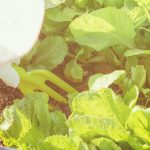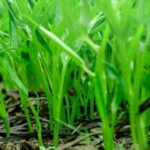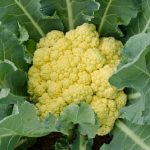In a vegetable garden, effective weed control is crucial for maintaining the productivity and health of your crops. One of the most valuable tools in achieving this control is the use of herbicides. Choosing the right herbicide can make all the difference in successfully managing weeds and promoting the growth of your vegetables.
Weeds can pose various challenges in vegetable gardens. They not only compete with your plants for resources like sunlight, water, and nutrients but can also harbor pests and diseases that can wreak havoc on your crops. Additionally, some fast-growing and invasive weeds can smother your vegetables, reducing their yield and overall quality. That’s why it is essential to invest in the best herbicide specifically formulated for vegetable gardens to effectively combat these issues.
Understanding the different types of herbicides available for vegetable gardens is vital when selecting the best one for your specific needs. There are two primary categories: selective and non-selective herbicides.
Selective herbicides target specific types of plants while leaving desired ones intact, making them ideal if you want to control certain weeds without causing harm to your vegetables. On the other hand, non-selective herbicides eliminate all vegetation they come into contact with, which can be useful when clearing an entire area before planting or when dealing with tough perennial weeds.
By considering factors such as weed type, safety precautions, and environmental implications, you can ensure that you choose a reliable herbicide that suits both your garden’s needs and personal preferences. It’s important to carefully read product labels and follow instructions regarding dosage, timing, and application techniques to achieve optimal results while minimizing any potential harm to desirable plants.
In this article, we will guide you through the process of selecting and safely using the best herbicide for your vegetable garden. We will provide an overview of different herbicide options available on the market specifically designed for vegetable gardens, analyze their features, effectiveness, pros and cons.
Additionally, we will offer a step-by-step guide to using herbicides in vegetable gardens and explore organic and natural alternatives for those seeking a more environmentally friendly approach. With the right knowledge and precautions, you can effectively manage weeds and ensure a flourishing vegetable garden.
Understanding the Different Types of Herbicides for Vegetable Gardens
When it comes to effectively managing weeds in your vegetable garden, using the right herbicide is essential. There are various types of herbicides available on the market, each with its own advantages and disadvantages. Understanding the different types can help you make an informed decision and choose the best herbicide for your specific needs.
- Selective Herbicides: Selective herbicides are designed to target specific types of weeds while leaving your vegetable crops unharmed. These herbicides work by targeting certain enzymes or metabolic processes that are unique to certain weeds. They are great for controlling broadleaf weeds without damaging grasses or other desirable plants in your garden. However, it’s important to note that selective herbicides may not be effective against all types of weeds.
- Non-Selective Herbicides: Non-selective herbicides, on the other hand, kill any plant they come into contact with, regardless of whether it’s a weed or a desirable plant in your vegetable garden. They are often used for total vegetation control or to manage heavy weed infestations before planting new crops.
It’s important to use non-selective herbicides carefully and only apply them to areas where you want complete vegetation removal, as they can harm your vegetable crops if not used properly. - Pre-Emergent and Post-Emergent Herbicides: Another important distinction among herbicides is whether they are pre-emergent or post-emergent. Pre-emergent herbicides prevent weed seeds from germinating, providing proactive weed control before they become a problem. Post-emergent herbicides, on the other hand, are applied after weeds have emerged from the soil and actively growing.
While both pre-emergent and post-emergent herbicides have their uses, it’s important to consider factors such as weed type and growth stage when selecting which type to use in your vegetable garden. Pre-emergent herbicides are best for preventing annual weeds from sprouting, while post-emergent herbicides are more effective against established weeds. Additionally, some herbicides have both pre – and post-emergent properties, providing a comprehensive solution to weed control.
By understanding the different types of herbicides available for vegetable gardens, you can choose the one that is most suitable for your needs. Consider factors like selective or non-selective action, pre-emergent or post-emergent capabilities, and the specific characteristics of the weeds you are dealing with. Remember to always read product labels and follow instructions for safe and effective use.
Factors to Consider When Selecting the Best Herbicide for Your Vegetable Garden
When it comes to selecting the best herbicide for your vegetable garden, there are several important factors to consider. By taking these factors into account, you can ensure that you choose a herbicide that effectively controls weeds while also being safe for your plants and the environment. Here are some key factors to consider when making your selection:
- Weed type: Different herbicides are designed to target specific types of weeds. It’s important to identify the types of weeds present in your vegetable garden so that you can choose a herbicide that is effective against those particular weeds. Some herbicides may only target broadleaf weeds, while others may be more effective against grassy weeds.
- Target crops: You need to consider the compatibility of the herbicide with the vegetables you are growing. Some herbicides may harm or kill certain vegetable plants if applied incorrectly or at high doses. It’s important to read the product labels carefully and choose a herbicide specifically labeled for use on vegetables.
- Safety precautions: When using any herbicide, it is crucial to prioritize safety precautions. This includes wearing protective clothing such as gloves, goggles, and long sleeves, as well as following proper application techniques and dosage instructions. Additionally, make sure to store herbicides safely out of reach of children and pets.
In addition to these specific factors, it’s also essential to read product labels and follow instructions provided by the manufacturer. These labels provide valuable information about proper application rates, timing, and safety guidelines for each specific herbicide.
Considering the environmental impact of a herbicide is also crucial when making a selection. Look for products that have minimal negative impact on beneficial insects, wildlife, and water sources.
By carefully considering these factors when selecting a herbicide for your vegetable garden, you can ensure effective weed control while minimizing risks to your plants and the environment.
Top-Rated Herbicides for Weed Control in Vegetable Gardens
Herbicide A: Brand Name
Herbicide A is a top-rated herbicide specifically designed for weed control in vegetable gardens. This herbicide targets a wide range of common weeds that often plague vegetable gardens, such as dandelions, purslane, and crabgrass. Its selective formula ensures that it kills unwanted weeds while leaving vegetable crops unharmed.
One of the key features of Herbicide A is its effectiveness in controlling stubborn perennial weeds that can quickly overtake a vegetable garden if left unchecked. Its fast-acting formula provides visible results within days, giving gardeners peace of mind knowing that their crops are protected.
However, it is important to note that Herbicide A may have specific limitations when it comes to certain vegetables. For example, it may not be compatible with more delicate or sensitive crops, so it’s essential to read the product label and conduct a small test application before widespread use.
Herbicide B: Brand Name
Another highly recommended herbicide for vegetable gardens is Herbicide B. This non-selective herbicide offers broad-spectrum control, effectively killing both annual and perennial weeds. It contains a powerful active ingredient that inhibits weed growth from the roots up, ensuring long-lasting weed control.
What sets Herbicide B apart is its versatility in terms of application methods. It can be applied directly to weeds using spot treatment techniques or used as a pre-emergent herbicide to prevent weed seed germination. Gardeners appreciate the flexibility this herbicide provides in targeting specific problem areas or treating an entire garden.
While Herbicide B proves to be highly effective against many types of weeds, caution must be exercised during application due to its non-selective nature. Care must be taken to avoid contact with desirable plants as even slight overspray can cause damage.
Herbicide C: Brand Name
For vegetable gardeners seeking an organic herbicide option, Herbicide C is a popular choice. This herbicide utilizes natural ingredients derived from plant extracts to control weeds in a safe and environmentally-friendly manner. It effectively kills common garden weeds without leaving harmful residues or chemicals in the soil.
One major advantage of Herbicide C is its quick breakdown time, making it ideal for use on vegetables with short harvest intervals. Additionally, it can be used up until the day of harvest, providing gardeners with peace of mind that their produce remains safe and free from chemical residues.
However, it’s important to note that while Herbicide C is a natural alternative, it may require more frequent applications compared to synthetic herbicides. Frequent monitoring and reapplication may be necessary to ensure effective weed control in the vegetable garden.
Step-by-Step Guide to Using Herbicides in Vegetable Gardens
Timing and Preparation
Using herbicides in vegetable gardens requires careful timing and preparation to ensure effective weed control while minimizing damage to desirable plants. The first step is to accurately identify the weeds present in your garden. This knowledge will help you select the most appropriate herbicide for your specific needs. Additionally, it is important to consider the growth stage of the weeds, as some herbicides are more effective on young, actively growing weeds.
Dosage and Application Techniques
Once you have selected the herbicide, carefully read and follow the product label instructions regarding dosage and mixing ratios. It is essential to measure and mix the herbicide correctly to avoid both under-application, which may result in ineffective weed control, and over-application, which can damage or kill your vegetable plants.
When applying the herbicide, take precautions to prevent it from coming into contact with desirable plants. Use a targeted approach by applying the herbicide directly to the foliage of the weeds, avoiding any direct application on vegetables or their surrounding soil.
Minimizing Harm and Maximizing Efficacy
To minimize harm to desirable plants and maximize weed control efficacy, follow these additional tips:
- Consider weather conditions: Apply herbicides when there is no wind to prevent drift onto nearby vegetables. Avoid applying herbicides during periods of heavy rain or when rain is expected within 24 hours as it may wash away the product before it has a chance to work effectively.
- Proper use of protective barriers: Use shields or protective barriers around desirable plants if necessary, such as plastic sheets or cardboard cutouts that can be held up against vegetable leaves during application.
- Cleaning equipment: Thoroughly clean any sprayers or equipment used after each application of an herbicide. This prevents cross-contamination between different areas of your garden and reduces the risk of accidental exposure.
- Proper disposal: Dispose of any leftover herbicide or empty containers following local regulations. This helps prevent environmental contamination and ensures the safety of both people and animals.
By following these step-by-step guidelines, you can effectively use herbicides in your vegetable garden to control weeds while safeguarding the health and productivity of your edible crops. Remember to always prioritize the safety of yourself, others, and the environment during herbicide application.
Herbicide Alternatives
While chemical herbicides can be effective in controlling weeds in vegetable gardens, some gardeners prefer to use organic and natural alternatives. These alternatives offer environmentally friendly options that are safer for humans, animals, and beneficial insects. In this section, we will explore different types of organic herbicides and other methods of weed control that can be used in vegetable gardens.
One common organic herbicide option is vinegar-based solutions. Vinegar contains acetic acid, which has the ability to kill many types of weeds. However, it is important to note that vinegar-based herbicides are non-selective, meaning they can harm any plant they come into contact with. Therefore, it is crucial to carefully apply them only to the weeds while avoiding any desirable plants.
Another organic alternative is the use of hot water treatments. Exposing weeds to high temperatures through hot water can effectively kill them without leaving behind any harmful residues in the soil. This method works best when applied directly to the foliage or roots of the weeds.
In addition to organic herbicides, there are also physical weed control methods and cultural practices that can help manage weeds in vegetable gardens. These methods include hand-pulling weeds, hoeing or tilling the soil to disturb weed seedlings, and using mulch or landscape fabric to suppress weed growth. It is important to remember that these methods may require regular maintenance and monitoring to ensure effective weed control.
When considering organic and natural alternatives for weed control in vegetable gardens, it is important to assess their efficacy for specific weed types and consider their potential impact on desirable plants. Some organic methods may require repeated applications or specific timing for optimal results. Additionally, it may be necessary to combine different methods for comprehensive weed control.
In summary, organic and natural alternatives provide viable options for controlling weeds in vegetable gardens without relying on chemical herbicides. While these alternatives may require additional effort and careful consideration, they offer a safer and more environmentally friendly approach to weed management. Gardeners should choose the method that best suits their needs and aligns with their goal of maintaining a thriving vegetable garden.
| Organic Herbicide Alternatives | Description |
|---|---|
| Vinegar-based solutions | Containing acetic acid, these herbicides can kill many types of weeds but should be applied carefully to avoid damage to desirable plants. |
| Hot water treatments | Exposing weeds to high temperatures through hot water can effectively eliminate them without leaving harmful residues in the soil. |
Precautions and Safety Measures When Using Herbicides in Vegetable Gardens
When it comes to using herbicides in vegetable gardens, it is crucial to prioritize safety. While herbicides are effective tools for weed control, they can also have negative impacts on human health and the environment if not used properly. By following a few important precautions and safety measures, you can minimize risks and ensure the well-being of both your plants and yourself.
First and foremost, always read the product label carefully before using any herbicide. The label provides essential information about the product’s active ingredients, application rates, proper handling procedures, and specific safety precautions. Make sure to follow all instructions on the label diligently. Each herbicide may have different requirements for usage, such as mixing ratios or waiting periods between application and harvest.
In addition to reading the product label, wearing appropriate protective clothing is essential when working with herbicides. This includes long-sleeved shirts, long pants, chemical-resistant gloves, goggles or a face shield, and boots or shoes that cover your feet completely. These precautions help minimize contact with herbicide residues and reduce the risk of skin irritation or other adverse effects.
Furthermore, it is necessary to use proper equipment when applying herbicides in vegetable gardens. Ensure that sprayers or applicators are clean and in good working condition before use. Use equipment specifically designed for herbicide application to avoid contamination or accidental spills. Take extra care when spraying near desirable plants to prevent drift onto them.
Storing herbicides safely is another critical aspect of ensuring overall safety. Always store herbicides in their original containers with secured lids to prevent leaks or spills. Keep these containers in a locked storage area out of reach of children or pets. Additionally, store them away from food products or animal feed to prevent accidental ingestion.
By taking these precautions and following safety measures when using herbicides in vegetable gardens, you can effectively manage weeds while safeguarding your health and the environment. Remember, always consult and follow the recommendations from the manufacturer or a trusted gardening expert for specific guidance on handling and applying herbicides.
| Safety Measure | Description |
|---|---|
| Read the Product Label | Thoroughly understand the instructions and safety precautions provided by the manufacturer on the herbicide product label. |
| Wear Protective Clothing | Use appropriate clothing, gloves, goggles, and footwear to minimize skin contact with herbicide residues. |
| Use Proper Equipment | Ensure sprayers or applicators are clean and suitable for herbicide application to avoid contamination or spills. |
| Store Herbicides Safely | Keep herbicides in their original containers with secured lids, stored in a locked area away from children, pets, food products, or animal feed. |
Remember that safety should always be prioritized when using any chemical substance in your garden. By following these precautions and safety measures, you can maximize the effectiveness of herbicides while minimizing potential risks.
Frequently Asked Questions (FAQ) about Herbicides for Vegetable Gardens
As gardeners strive to maintain weed-free vegetable gardens, it is common to have questions about the use of herbicides. Here, we address some frequently asked questions (FAQ) about herbicides for vegetable gardens to provide clarity and assist in making informed decisions.
One common concern among gardeners is the potential residual effects of herbicides on their vegetable crops. It is essential to choose herbicides that have minimal residual effects or follow the recommended waiting period before planting edible crops.
Always read the product label carefully for specific instructions on re-entry intervals and crop safety. For those who prefer organic gardening, there are natural and organic herbicide alternatives available that can be used without causing harm to vegetable plants or compromising soil health.
Another question often asked is how herbicides may affect soil health. While some herbicides may have minimal impacts on beneficial organisms in the soil when used as directed, it is crucial to consider this potential impact when selecting a herbicide. Opting for selective herbicides that primarily target broadleaf weeds while sparing grasses can help minimize any negative effects on soil microorganisms and nutrient availability.
Gardeners also commonly wonder if using herbicides will negatively impact pollinators and other beneficial insects in their vegetable gardens. It is important to choose herbicides that have low toxicity to non-target organisms, such as bees and butterflies. Consider selecting herbicides that are safe for bees or applying them during times when pollinators are less active, such as early morning or late evening.
By understanding the frequently asked questions about using herbicides in vegetable gardens, gardeners can make informed choices that balance effective weed control with environmental stewardship and crop safety. Remember, it is always advisable to consult with local horticultural experts or extension services for guidance tailored to specific regions and crops grown in your vegetable garden.
Conclusion
In conclusion, choosing the best herbicide for your vegetable garden is essential for maintaining a flourishing and productive space. The presence of weeds in your vegetable garden can have a detrimental impact on the health and productivity of your crops. By effectively controlling weeds with the appropriate herbicide, you can ensure that your vegetables have the necessary resources to grow and thrive.
When selecting an herbicide, it is important to consider factors such as weed type, target crops, and safety precautions. Each herbicide has its own advantages and disadvantages, so it is crucial to read product labels and follow instructions carefully. Additionally, considering the environmental and health impacts of different herbicides can help you make a more sustainable choice for your vegetable garden.
Throughout this article, we have discussed the top-rated herbicides available on the market specifically designed for vegetable gardens. We have analyzed their features, effectiveness, and target weeds to help you make an informed decision. Remember that timing, dosage, and application techniques are key when using herbicides in your vegetable garden. By following a step-by-step guide and taking proper precautions, you can minimize harm to desirable plants while maximizing weed control efficacy.
In addition to chemical herbicides, there are also organic and natural alternatives available. Vinegar-based solutions and hot water treatments are examples of organic herbicides that can be used safely in vegetable gardens. Physical weed control methods and cultural practices should also be considered as part of an integrated approach to weed management.
Lastly, it cannot be stressed enough how important safety is when handling and applying herbicides. Wearing protective clothing, using proper equipment, and storing herbicides safely are crucial precautions to take. By minimizing risks and hazards associated with herbicide use through proper safety measures, you can protect yourself as well as your garden.
Frequently Asked Questions
What can you spray on your garden to kill the weeds but not the vegetables?
To effectively kill weeds in your garden without harming the vegetables, there are several options available. One approach is to use a selective herbicide specifically designed to target common garden weeds while sparing vegetables. These herbicides often contain active ingredients like 2,4-D or dicamba, which are effective against broadleaf weeds while being safe for most vegetable plants when used according to the instructions.
Another option is to manually remove the weeds by hand or with tools like a hoe or cultivator. This method requires some physical effort but ensures that you only remove the unwanted plants without risking damage to your vegetables.
Is it OK to use Roundup on vegetable garden?
It is generally not recommended to use Roundup on a vegetable garden. Roundup contains glyphosate, a non-selective herbicide that kills all actively growing plants it comes into contact with, including vegetables.
While Roundup can be effective in weed control for other areas of your yard or garden where there are no edible plants present, it’s important to avoid using it directly on or near vegetables as it poses a risk of contaminating your harvest with potentially harmful chemicals.
How do I fix my vegetable garden full of weeds?
To address a vegetable garden overrun with weeds, there are several steps you can take to restore its health and productivity. First, start by manually removing as many weeds as possible using gardening tools like hoes or cultivators. Be sure to dig deep and remove the entire root system of each weed to prevent regrowth. Next, consider applying a layer of organic mulch around your vegetable plants.
Mulching helps suppress weed growth by blocking sunlight from reaching weed seeds and also provides additional nutrients as the organic material breaks down over time. Regularly cultivate the soil between rows and around individual plants to disrupt weed growth and prevent them from establishing strong root systems. Finally, consider introducing beneficial insects or companion planting techniques such as interplanting herbs that repel pests and discourage weed growth naturally. With persistence and proper care, your vegetable garden can be restored to a weed-free and thriving state.

If you’re looking to get into vegetable gardening, or are just looking for some tips on how to make your current garden better, then you’ve come to the right place! My name is Ethel and I have been gardening for years. In this blog, I’m going to share with you some of my best tips on how to create a successful vegetable garden.





